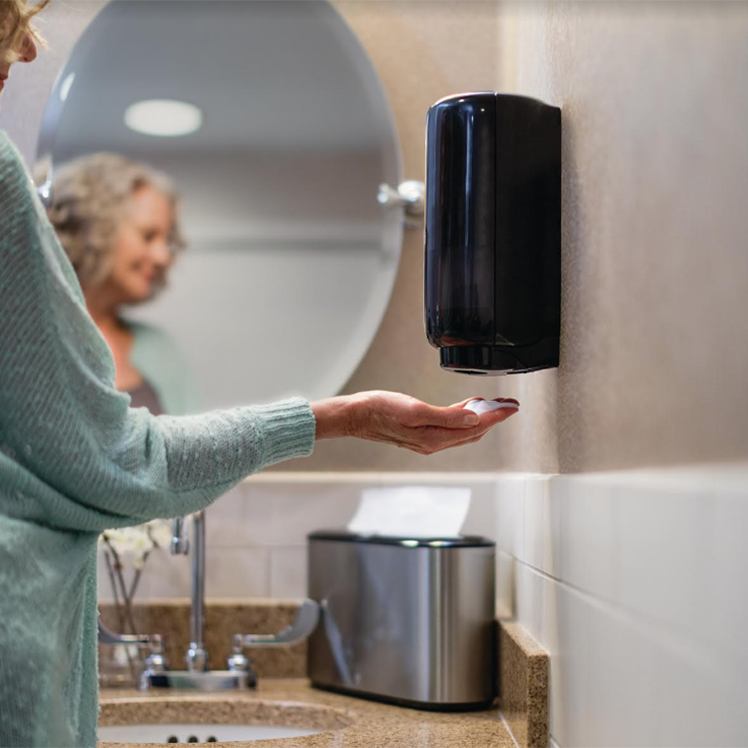The staff and five million residents of long term care (LTC) facilities are among those most vulnerable to COVID-19. As long term care facilities prepare to reopen to visitors, raising awareness of hygiene behaviors and reinforcing hygiene routines can help everyone be safer.
Importance of visitors for LTC residents

Prolonged physical separation and isolation from family and friends can negatively affect overall health and well-being. Technology can help decrease loneliness for some residents but is not a sustainable replacement for in-person contact. Also, family members often play a critical role in caring for, supporting, and advocating for residents.
Why it’s critical to be prepared for visitors

Restricting visitors has been a big part of the approach to prevent germs and viruses from being brought into LTC facilities. As visitors start re-entering these facilities, it’s critical to raise awareness that hygiene needs have increased, and visitors have an important role to play. The following can help reinforce positive hygiene behaviors.
1. Create a checklist
Long care facilities can prepare to welcome visitors again by creating a checklist and other helpful tools. The checklist can include:
- Key materials: Create materials to answer common questions. The checklist can include a scheduling protocol, health questionnaires, and handouts that emphasize hygiene, social distancing and wearing of face coverings.
- Guidance on visitor-resident interactions: The checklist can indicate how many visitors are allowed per resident and share guidance on visitors interacting with other residents.
- Visuals: While visitors will have likely heard positive messages about the importance of washing hands, you can reinforce that point with attractive visuals. Display “How to be a good visitor” and “Handwashing best practices” posters.
- Regulations: Check with local and state authorities on specific regulations for your facility.
2. Focus on high touch surfaces
Reopening to visitors means that many surfaces will be touched more often by people throughout the facility. Routine cleaning and disinfecting procedures will create a safer environment in all key areas, including resident rooms, public restrooms, and kitchens and foodservice areas. Other high touch surfaces to clean include desks, elevator buttons, door handles, and furniture in common areas and lobbies.
3. Products that make a difference

Along with clear messages and information, effective products will help prevent cross-contamination and the spread of foodborne illness. Relevant hygiene products that can help facilities improve cleaning standards include touch-free dispensers, soap products, and compliance signage. For example, in resident rooms and restrooms, easy-to-use dispensers support good hygiene and can provide an at-home feel for residents and guests.
How can you create a safe and welcoming environment in long term care facilities? Use a hygienic approach to protect residents, staff, and visitors. To learn more strategies for promoting good hygiene, view the Hygiene guide for re-opening Long Term Care facilities to visitors, developed by Tork.
Sources:
1PR Newswire: Long Term Care Market Size, Share & Trends, 2020-2027
